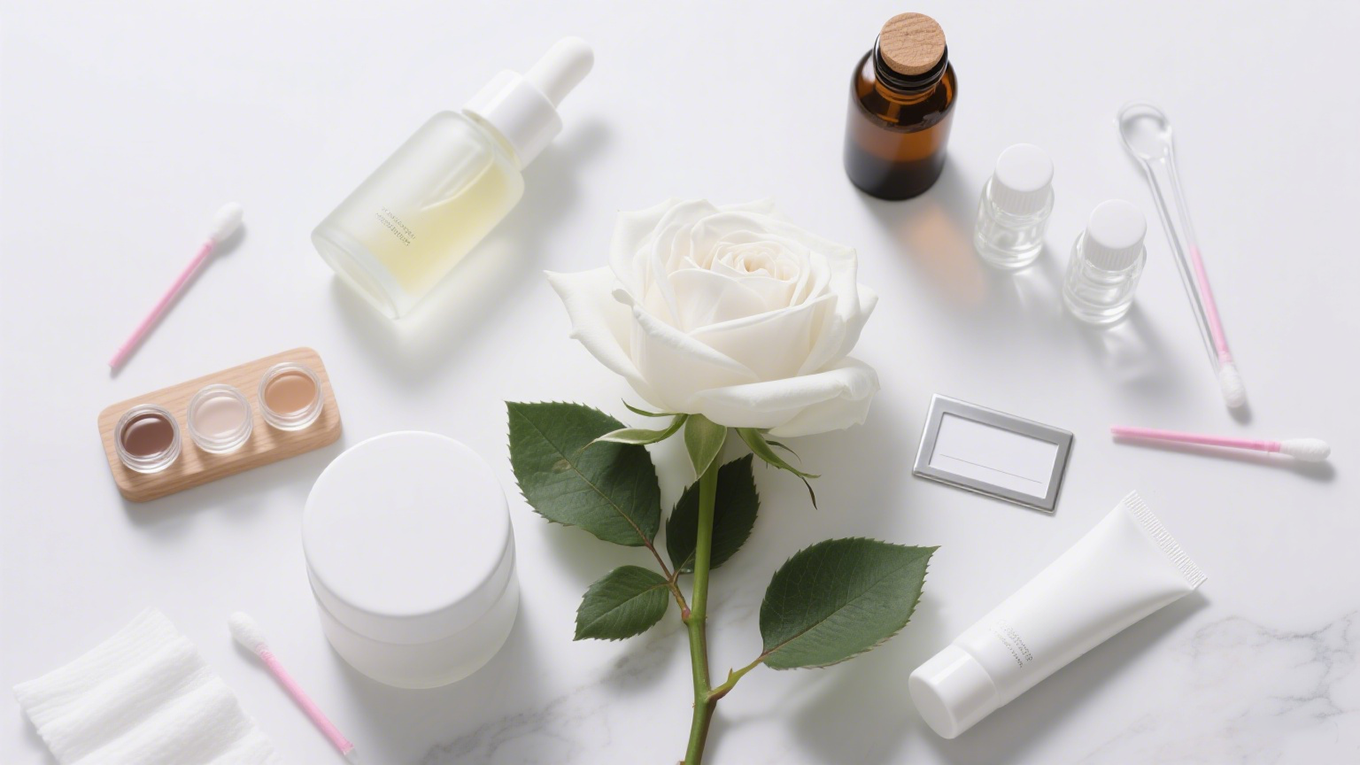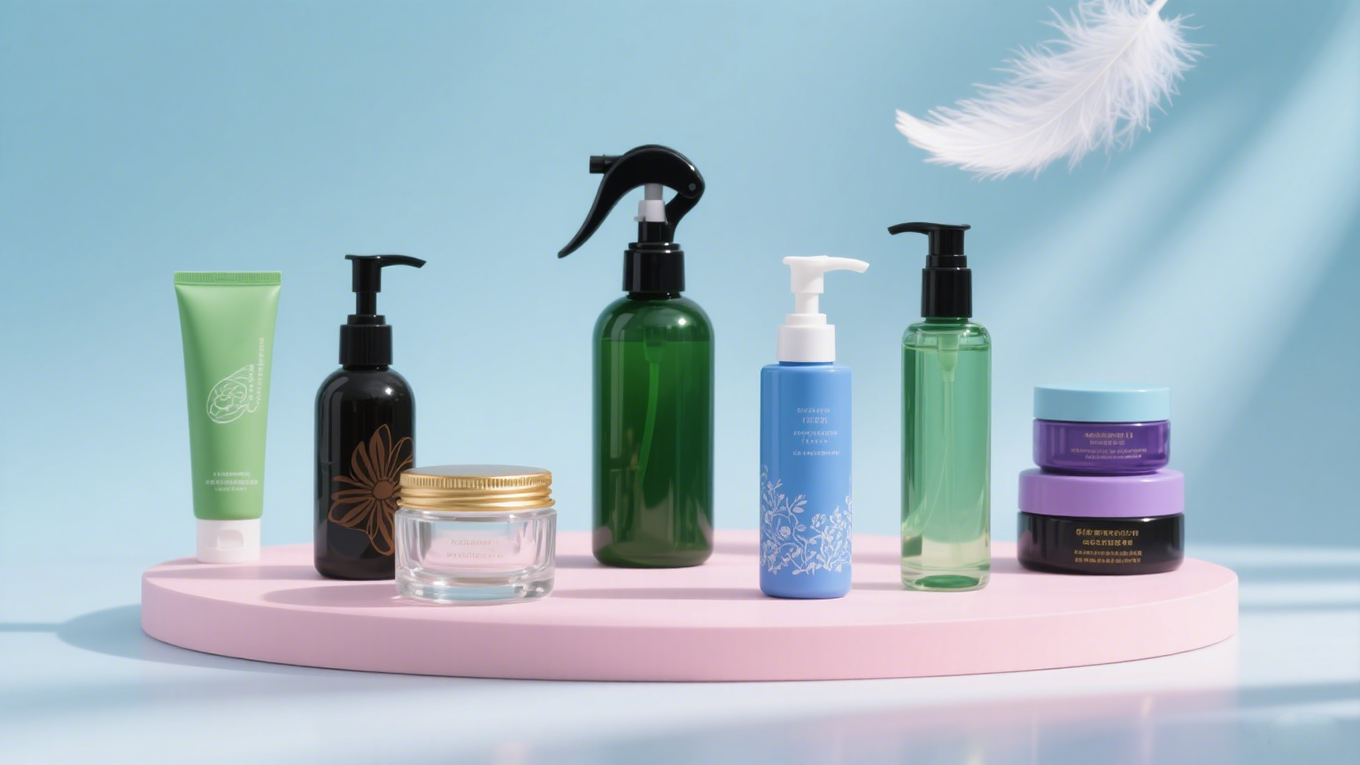Cosmetic bottles are a fundamental component of the beauty industry, serving as both functional containers and key elements of brand identity. From skincare serums to hair care products, the right packaging not only protects the product but also enhances consumer experience and perception. In 2025, cosmetic bottles are evolving beyond simple containers, reflecting innovations in design, materials, sustainability, and marketing strategies. This guide explores the various types, materials, and trends in cosmetic bottles, offering insights for brands looking to elevate their packaging game.
What Is a Cosmetic Bottle?
A cosmetic bottle is a specially designed container used to hold beauty products such as lotions, creams, serums, oils, and liquid makeup. These bottles are crafted to maintain product integrity, prevent contamination, and provide convenience for consumers. While their primary function is storage and protection, cosmetic bottles also play a significant role in branding, visual appeal, and user experience.
Key functions of cosmetic bottles include:
- Protection: Shields the product from environmental factors like light, air, and moisture.
- Dispensing: Provides easy and controlled release of the product, minimizing waste.
- Aesthetic Appeal: Enhances the product’s marketability through attractive design and materials.
- Brand Identity: Reinforces brand messaging through unique shapes, labels, and colors.
Popular Types of Cosmetic Bottles
The market offers a variety of cosmetic bottle types, each tailored to specific product needs and consumer preferences.
1. Pump Bottles
Pump bottles are commonly used for serums, lotions, and liquid soaps. They provide controlled dispensing and maintain product hygiene by reducing direct contact with the hands.
Benefits of pump bottles:
- Precise control of product quantity.
- Reduced risk of contamination.
- Easy to use and convenient for daily routines.
2. Dropper Bottles
Dropper bottles are ideal for serums, essential oils, and other concentrated products. They allow precise dosing and are particularly popular in skincare products that require careful application.
Advantages of dropper bottles:
- Accurate measurement of liquid products.
- Minimal wastage.
- Suitable for high-value, potent formulas.
3. Spray Bottles
Spray bottles are used for facial mists, toners, hair sprays, and body sprays. They ensure even distribution of the product over a wide area.
Key features of spray bottles:
- Fine mist for uniform application.
- Easy and convenient for on-the-go use.
- Can be designed with adjustable nozzles for different spray patterns.
4. Flip-Top and Screw-Top Bottles
These bottles are versatile, often used for shampoos, conditioners, and body washes. Flip-top caps offer convenience, while screw-top bottles ensure secure sealing.
Advantages:
- Convenient opening and closing.
- Prevents leakage during travel.
- Compatible with a variety of liquid viscosities.
Materials Used in Cosmetic Bottles
Choosing the right material is crucial for product stability, safety, and sustainability. Popular materials in cosmetic bottles include:
1. Plastic
Plastic is lightweight, versatile, and cost-effective. Common types include PET, HDPE, and PP. Brands can create a wide range of shapes and colors with plastic bottles.
Pros:
- Affordable and durable.
- Resistant to breakage.
- Can be recycled depending on the type of plastic.
2. Glass
Glass bottles are favored for premium products such as luxury serums and essential oils. They provide excellent barrier properties and a high-end appearance.
Pros:
- Non-reactive and preserves product integrity.
- Elegant and premium aesthetic.
- Recyclable and eco-friendly.
3. Aluminum and Metal
Metal bottles are increasingly used for sprays and skincare products requiring robust protection. Aluminum is lightweight, corrosion-resistant, and recyclable.
Pros:
- Provides superior protection from light and air.
- Durable and long-lasting.
- Supports eco-friendly branding initiatives.
Emerging Trends in Cosmetic Bottle Design
As the beauty industry evolves, cosmetic bottles are no longer just functional—they are a medium for innovation and brand storytelling.
1. Sustainable Packaging
Sustainability is a major trend in 2025. Consumers are prioritizing brands that use eco-friendly materials and designs. Refillable bottles, biodegradable plastics, and recycled glass are becoming standard.
2. Customization and Branding
Personalized bottles with unique shapes, embossed logos, or limited-edition colors help products stand out. Brands are leveraging packaging as an extension of their identity.
3. Smart Packaging
Technological integration is gaining traction. Smart cosmetic bottles with QR codes, NFC chips, or connected apps provide usage tracking, authenticity verification, and personalized product recommendations.
4. Minimalist and Functional Design
Modern consumers appreciate bottles that combine simplicity with functionality. Minimalist designs reduce material use while focusing on ease of use and aesthetic appeal.
Tips for Selecting the Right Cosmetic Bottle
Choosing the ideal cosmetic bottle involves considering multiple factors:
- Product Type: Viscosity, sensitivity, and intended use influence bottle selection.
- Consumer Experience: Ease of use, dispensing method, and portability are critical.
- Brand Image: Packaging should align with the brand’s positioning and story.
- Regulatory Compliance: Ensure materials meet safety standards and labeling requirements.
- Sustainability Goals: Consider eco-friendly materials and designs to appeal to conscious consumers.
By carefully selecting bottles that balance functionality, aesthetics, and sustainability, brands can enhance product appeal and drive customer loyalty.
Cosmetic bottles play a vital role in the beauty industry, serving as more than just containers. They protect the product, enhance user experience, communicate brand identity, and reflect sustainability values. With innovations in materials, design, and smart packaging, cosmetic bottles are evolving into powerful tools for differentiation and consumer engagement. Brands that prioritize both functionality and creativity in their packaging strategies are well-positioned to succeed in the competitive 2025 beauty market.



